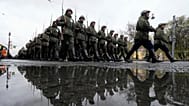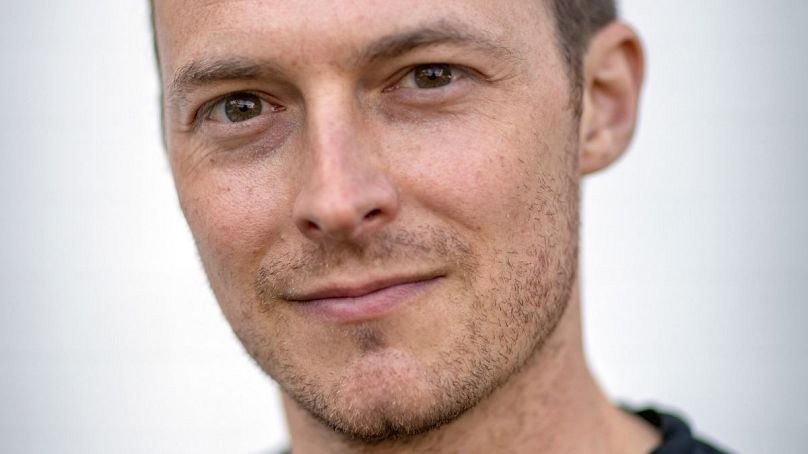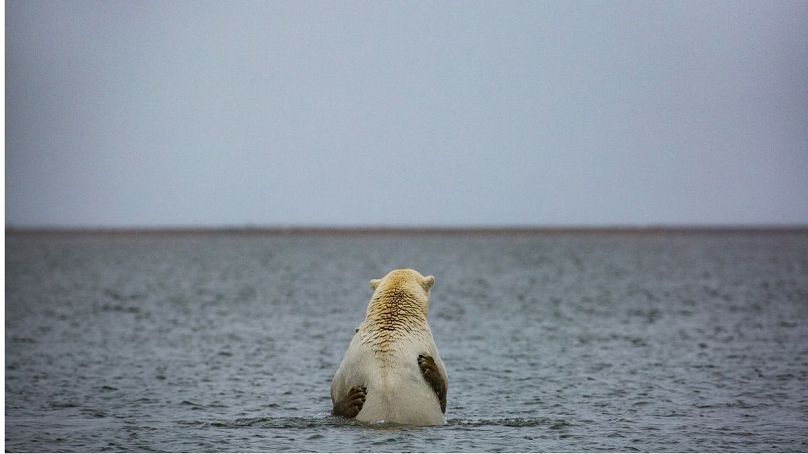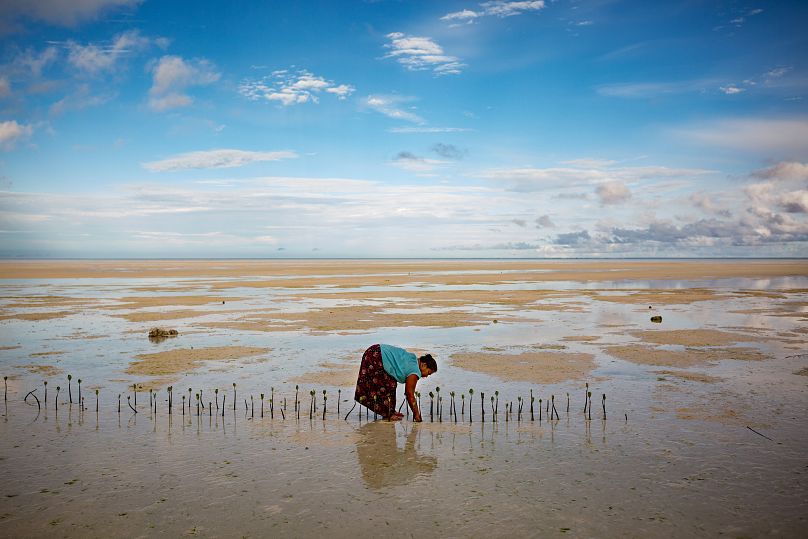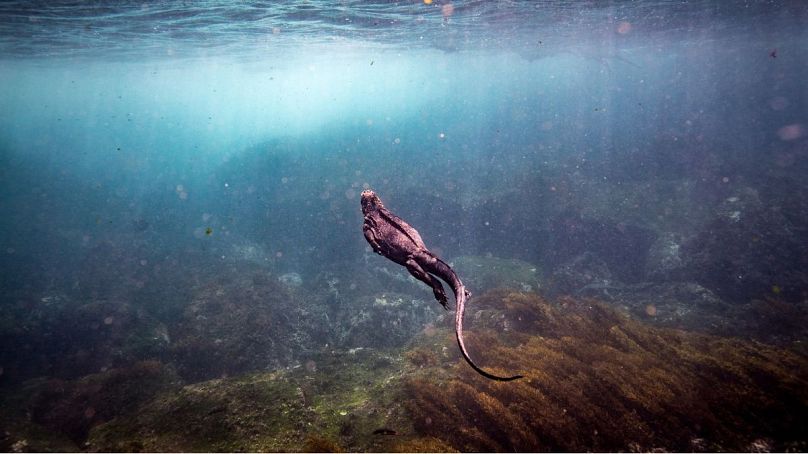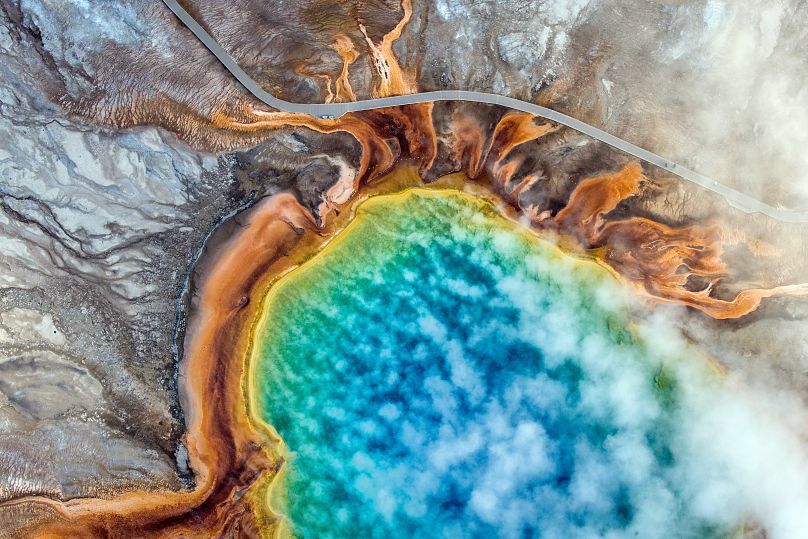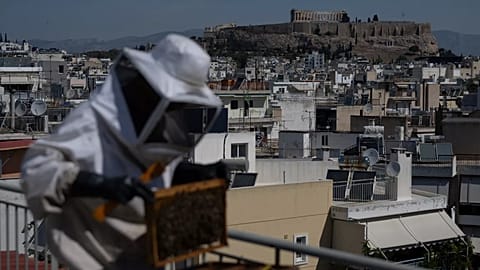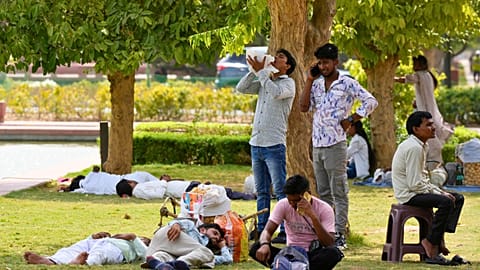An extraordinary set of photos documenting the worldwide effects of global warming, exhibited by Josh Haner at Photo London.
Photo London is a sight to behold in 2019. Opening today, the internationally renowned photography event takes place in the global cultural capital, showcasing remarkable creative talent from all over the world. Over the years, Photo London has gained a reputation for exhibiting radical photography, shining light on global issues we are facing as a planet. 2019 is no different, in fact, one American photographer has taken this year’s edition by storm with a truly extraordinary exhibition: Carbon’s Casualties.
This Pulitzer prize-winning photographer, The New York Times’ own Josh Haner, has been working across the globe for the last three years documenting the explicit effects of climate change. Carbon’s Casualties shines light on both the intimate and expansive effects of global warming, using a combination of ground-work and drone footage to achieve this. Haner exposes the tragic displacement of climate refugees, forced out of their homes by floods and draught, and the loss of cultural identities in the process. Poignant and powerful, the exhibition brings climate change into the forefront of our own realities, displaying the stark fragility of planet earth.
Josh Haner, how long did it take you to complete this project?
"So the work that you’re seeing here spans from September 2015 until November 2018, the last assignment was done in the Galapagos, and the first was in Greenland. The Greenland piece was our proof of concept, all about making visual journalism about climate change. One of our theories was that people have sort of typecast climate change imagery in the past, to being…that stereotypical image of a polar bear floating on a piece of ice. As a result of this doomsday narrative, I was finding myself less likely to read articles on these issues, so what I was trying to do was make climate change more proximate to people. We thought that taking a visual approach would make people engage more with the problem."
What made you decide to start focusing on climate change documentation?
"At The New York Times, most of our series are run by the writers, so as a photographer I would be assigned to a specific story. But with this project, we started with the visuals. So we wrote the content with the images already in the article template – flipping the whole process on its head. It’s a very different way of thinking about journalism, visuals first. It all started with Greenland, I actually went there initially, for a completely different reason in 2015, it was to travel with the US ambassador who was visiting research centre. So I thought, if I’m going there, I’m going to bring this drone that I’m learning how to fly, and I’m going to try to find a story that I can tell there. When I won the Pulitzer prize back in 2014, I suddenly had a license to pitch stories. So that was the very start of it all, and from there, environmental documentation has become something I’m very passionate about. Greenland was just the start of a three year assignment."
"As a result of how our audience received the Greenland photos, they let me spend the next year focusing on climate refugees around the world, and then on world heritage sites and cities. It was quite a dedication of resources from The New York Times, to travel to all these locations. I was in partnership with reporters some of the time, which was necessary for safety reasons, and some of the time I went alone."
Were you trying to use the perspective of the drone to echo the feeling of remoteness we have towards climate change?
"Yes, as a licensed drone pilot, I think the physical proximity of the camera is important. I’ve seen a lot of people using aerial footage and usually their series of work is just aerial, that’s definitely a genre. What I really wanted to do was juxtapose those very abstract images with the more human angle on the ground. But the logistics of drone use were difficult to overcome. You might think that I was travelling all the time, but as drone legislation has matured over the last four years, most of my time was spent filling out drone applications. What you don't see behind the photos, is the months of work it took to get permission to photograph in the Galapagos islands. Or in Bolivia, the fact that we took the footage at 13,000 feet, when drones are usually only tested to 11,000 feet. The result - they start to move and the batteries failed. Then there was dealing with the mineral content of the salt flats preventing the drone from calibrating. There’s a lot of logistics involved! But it was worth it."
"I’ve also combined video footage in the exhibit as well, to unveil more context of the story through the motion of the drone. Abstract, expansive imagery can be beautiful, but it begs many questions, so that’s why we’ve juxtaposed it with intimate, human interactions too."
Would you say this is a positive exhibition?
"I think we have attempted to show the negative repercussions of climate change, while also showing positive acts that people are doing in their communities, not just to benefit their own generation, but generations to come. There’s a lot of forward thinking by people in these photographs. So if we take this image of the woman planting mangrove trees on the island of North Tarawa, Kiribati - this is a woman at low tide, on the beach in front of her home, where she has been seeing erosion happening at an accelerating rate for years. Now, she is taking it upon herself to organise, along with nine other women in her community, cutting seedlings from nearby mangrove trees and planting them. This is not going to affect her; it is forward thinking. The roots of these mangrove trees are going to protect her grandchildren’s home. So in that sense, it shows the small, positive acts put forward by individuals, that hopefully policy makers and other countries can learn from."
Before this project, how much did you think about climate change?
"Well, I’m born and raised in California and so after 13 years in New York, I wanted to bring my family back to California because of its proximity to nature. Growing up, I would backpack and camp, my first photos were of waterfalls around San Francisco. That connection to nature is always something that has been very important to me. It’s something I really want my daughter to understand as she is growing up; she’s only 4 months old at the moment but I want to show her that the choices we make now are really important."
"In terms of my career background, I went to Stanford University and studied computer science. Then I was hired by The New York Times as their youngest photographer in 2006 and, after proving that I could make an indelible contribution to the newspaper through both my photography and technological skills, I was able to start focusing on assignments that I myself believed in. That’s when Carbon’s Casualties really began."
What would you like to come out of this exhibition?
"The New York Times believes that climate change is scientific fact, man-made climate change is a fact. So that’s a really good underlying thing for me to base this work on. We don’t have to worry about convincing people that human actions accelerate what’s going on, because its indisputable. We believe science. My role is to show the universality of the effects of the climate that are happening right now. It’s not something in the distant future, it’s happening right now. We were able to show images from the Orkney islands right on your doorstep in the UK, or in Louisiana and Alaska in the US - this really makes it all the more proximate and brings us closer to the problem. These stories will make people think about how climate change is affecting their own society and their choices. It’s less activism and more an education for viewers."
Do you live a sustainable lifestyle yourself?
"In terms of living sustainably, I am making choices, starting with the food I’m consuming. I eat seasonal and local food, but I think everyone needs to decide on their own and make their own lifestyle decisions to effect change. We have a garden in our back yard so it’s all about starting small and at a young age too. I’m hoping, in this way, we can start to think more about preventing global warming from getting worse, rather than simply finding climate engineering solutions to the already established problems."
Words: Maeve Campbell



